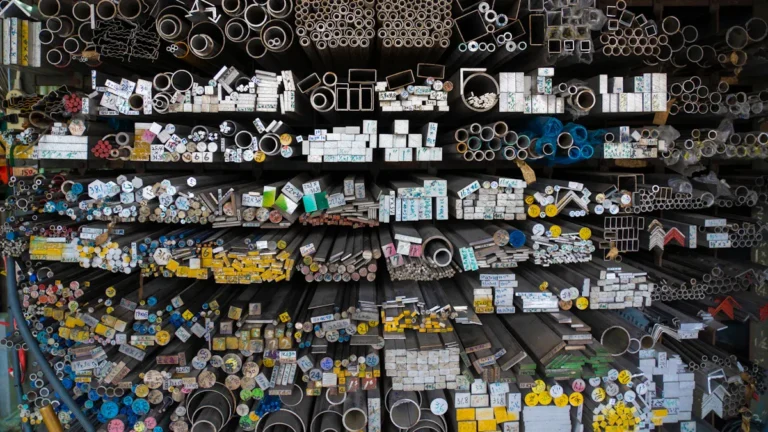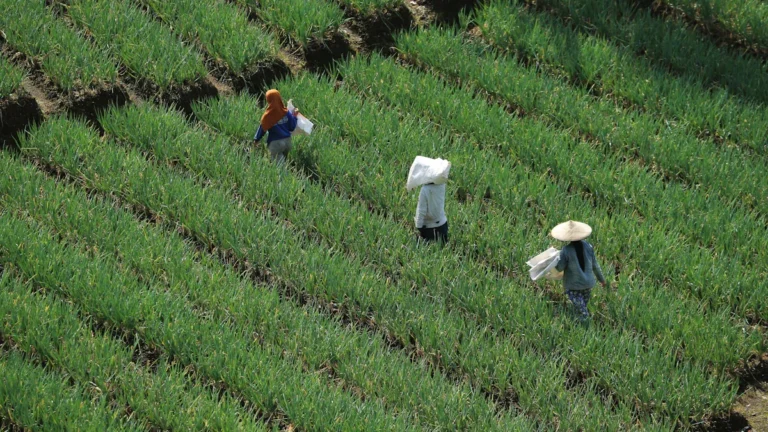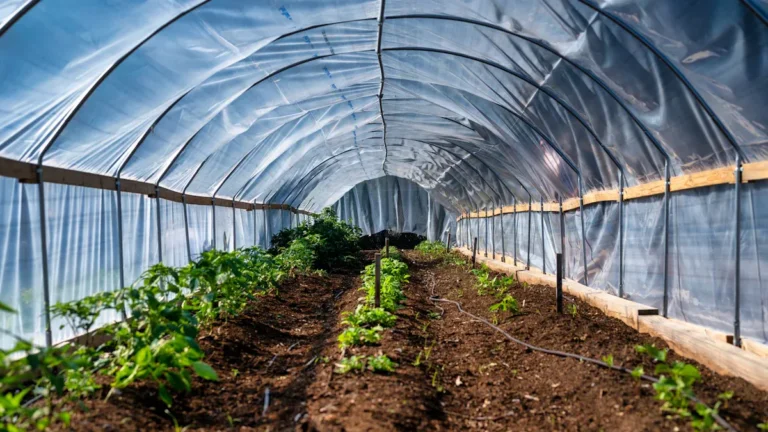Choosing the Best Lawn Irrigation System for Your Yard
Compare lawn irrigation systems like sprinklers, drip, and smart systems. Find the best fit for your yard's size, climate, and budget while saving water.

I’ve learned that the perfect lawn irrigation system can make all the difference for a healthy yard. The right irrigation system saves water and reduces costs. Whether you’re maintaining a small yard or an irrigation system for home garden, choosing wisely ensures your lawn thrives while conserving resources.
Key Takeaways
Picking the best lawn watering system saves water and money.
Drip systems work well by sending water straight to roots.
Smart systems use live data to plan watering and save money.
Types of Lawn Irrigation Systems

When it comes to watering a lawn, I’ve found that different irrigation systems offer unique benefits. Choosing the right one depends on your yard’s needs and your goals for water efficiency. Let’s explore the main types of lawn irrigation systems.
Sprinkler Systems
Sprinkler systems are one of the most popular options for residential lawns. They distribute water evenly across large areas, making them ideal for medium to large yards. I’ve noticed that these systems can be either stationary or rotating, depending on the design.
Advantages:
They cover a wide area efficiently.
They’re easy to install and adjust.
Challenges:
Wind can affect water distribution.
Overwatering may occur if not properly managed.
Sprinkler systems rely on metrics like Christiansen’s Uniformity Coefficient and Distribution Uniformity (DU) to measure water distribution efficiency. Factors such as nozzle diameter and operating pressure play a significant role in performance.
Drip Irrigation Systems
Drip irrigation systems are perfect for conserving water. I’ve seen how they deliver water directly to plant roots, minimizing evaporation and runoff. These systems are especially useful for gardens and landscaped areas.
Key Benefits:
They’re up to 90% more efficient than traditional methods.
Water consumption can be reduced by up to 60%.
Aspect | Drip Irrigation | Other Methods |
|---|---|---|
Water Savings | N/A | |
Water Pressure Required | 8-20 psi | 45-70 psi |
Energy Savings | Yes | N/A |
I’ve found that drip irrigation systems are ideal for homeowners looking to save water and energy while maintaining a healthy lawn.
Soaker Hose Systems
Soaker hoses are a simple and affordable option for watering lawns and gardens. These hoses release water slowly along their length, ensuring deep soil penetration.
Advantages:
They’re easy to set up and move around.
They work well for small to medium-sized yards.
Drawbacks:
They may not provide uniform coverage for larger areas.
They require regular maintenance to prevent clogging.
I often recommend soaker hoses for homeowners who want a low-cost solution for targeted watering.
Manual Watering Methods
Manual watering involves using a hose or watering can to irrigate your lawn. While it’s labor-intensive, I’ve found it to be a flexible option for small yards or specific areas that need extra attention.
Strengths:
It allows precise control over water distribution.
It’s inexpensive and doesn’t require installation.
Weaknesses:
It’s time-consuming and less efficient for large areas.
It can lead to inconsistent watering if not done carefully.
Manual watering is best suited for homeowners who enjoy hands-on lawn care and have smaller spaces to manage.
Smart Lawn Irrigation Systems
Smart irrigation systems are the future of lawn care. These systems use sensors and real-time weather data to optimize watering schedules. I’ve seen how they can save water and reduce costs significantly.
Features:
Real-time weather data prevents overwatering or underwatering.
App-based controls simplify scheduling and compliance with local restrictions.
Performance Highlights:
Rain sensors reduce annual water use by an average of 22.1%.
Soil moisture sensors achieve a 66.2% reduction in water use over three years.
The average ROI for rain sensors is 87%, while soil moisture sensors offer a 200% ROI within the first year.
Smart systems are ideal for homeowners who want convenience and automation while conserving resources.
Pros and Cons of Lawn Irrigation Systems
Sprinkler Systems: Advantages and Drawbacks
Sprinkler systems work well for large areas, but they come with their own set of challenges. I’ve noticed that their ability to cover wide spaces makes them a popular choice for many homeowners. Однако, they can be costly to install and maintain.
Advantages:
They provide even water distribution, which simplifies irrigation scheduling.
They minimize dry spots and overwatered areas, improving lawn health.
They support effective fertilizer application by ensuring uniform water coverage.
Drawbacks:
Wind can disrupt water distribution, reducing efficiency.
The upfront cost can be high, especially for automated systems.
Maintaining good distribution uniformity (DU) is key to maximizing the benefits of sprinkler systems. It reduces water usage and ensures consistent soil moisture levels, which improves overall lawn quality.
Drip Irrigation Systems: Benefits and Limitations
Drip irrigation systems excel in water conservation. I’ve found that they deliver water directly to plant roots, reducing evaporation and runoff. This makes them highly efficient compared to other methods.
Benefits:
They are 90% efficient in water usage, compared to 65-75% for sprinklers.
They reduce weed growth by targeting water delivery.
They improve plant health by maintaining optimal moisture levels.
Limitations:
Precise installation is required for effective operation.
Regular maintenance is necessary to prevent clogging.
Drip irrigation systems are ideal for homeowners who prioritize water conservation and want to maintain a healthy lawn with minimal waste.
Soaker Hose Systems: Pros and Cons
Soaker hoses offer a simple and budget-friendly solution for watering. I’ve seen how they can be used temporarily or permanently, depending on the yard’s needs.
Irrigation System | Pros | Cons |
|---|---|---|
Soaker Hose | Versatile and economical | May distribute water unevenly on slopes |
Easy to set up and move | Can encourage weed growth |
Soaker hoses work best for small to medium-sized yards where targeted watering is needed.
Manual Watering: Strengths and Weaknesses
Manual watering gives you complete control over water distribution. I’ve noticed that it works well for small yards or specific areas needing extra care.
Strengths:
It’s inexpensive and doesn’t require installation.
It allows precise watering for delicate plants.
Weaknesses:
It’s time-consuming and labor-intensive.
It often leads to inefficient water usage, especially in changing weather conditions.
Manual watering can be a good option for those who enjoy hands-on lawn care, but it’s less practical for larger areas.
Smart Lawn Irrigation Systems: Pros and Cons
Smart irrigation systems bring automation and efficiency to lawn care. I’ve seen how they use weather data and soil sensors to optimize watering schedules, saving both water and money.
Metric | Описание |
|---|---|
Water Conservation | Reduces water waste by responding to weather and soil moisture. |
Cost Savings | Lowers utility bills and labor costs through automation. |
Enhanced Crop Health | Promotes healthy plant growth and reduces fertilizer dependence. |
Sustainability | Minimizes water waste, contributing to a smaller environmental footprint. |
Preventing Disease Risks | Prevents over-irrigation, reducing water-related diseases. |
Smart systems are perfect for homeowners who value convenience and want to reduce their environmental impact.
Comparing Lawn Irrigation Systems
Water Efficiency and Conservation
Water efficiency plays a critical role in choosing the right lawn irrigation system. I’ve noticed that drip irrigation systems excel in this area. They save up to 70% more water compared to traditional sprinklers. Their water use efficiency reaches up to 90%, while sprinklers range between 50% и 70%. Drip systems target plant roots directly, reducing evaporation and runoff. Soaker hoses also conserve water by slowly releasing it into the soil, though they may not match the precision of drip systems.
If water conservation is your priority, I recommend drip irrigation. It minimizes waste and ensures plants receive the moisture they need without overwatering.
Cost and Installation Considerations
The cost of installing a lawn irrigation system varies widely. Fully installed sprinkler systems range from $3,500 к $6,500. Costs per irrigation zone average $500 к $700, with most yards requiring five to seven zones. Aboveground systems take 2 к 4 hours to install, while underground systems require 8 к 16 hours.
Cost Type | Average Cost |
|---|---|
Fully Installed Sprinkler | $3,500 – $6,500 |
Cost per Irrigation Zone | $500 – $700 |
Backflow Prevention Valve | $600 |
Installation Time (Aboveground) | 2 – 4 hours |
Installation Time (Underground) | 8 – 16 hours |
For smaller yards, manual watering or soaker hoses offer budget-friendly options. Однако, for larger areas, sprinklers or smart systems provide better long-term value despite higher upfront costs.
Maintenance and Durability
Routine maintenance ensures the longevity of any irrigation system. I’ve seen how neglecting maintenance can lead to inefficiencies. For example, failing to adjust watering schedules can increase water usage by 27%. Drip systems require regular checks to prevent clogging, while sprinklers need periodic nozzle cleaning and alignment.
Long-term monitoring shows that proper maintenance reduces water use by 44% and extends system lifespan. I always recommend scheduling seasonal inspections to keep your system running efficiently.
Environmental Impact and Sustainability
Sustainability is another important factor. Studies show that irrigation methods like rainwater harvesting significantly reduce energy demand and CO2 emissions compared to well-water systems. Drip irrigation also supports sustainability by minimizing water waste and runoff.
I believe choosing an environmentally friendly system benefits both your lawn and the planet. Smart irrigation systems, with their ability to optimize water use, are an excellent choice for eco-conscious homeowners.
Choosing the Right Lawn Irrigation System

Evaluating Your Yard’s Size and Layout
The size and layout of your yard play a crucial role in selecting the best lawn irrigation system. I’ve noticed that smaller yards often benefit from simpler solutions like manual sprinklers or drip irrigation systems. These systems are cost-effective and easy to manage. Larger spaces, such as commercial properties or expansive residential lawns, require more sophisticated setups. Underground sprinkler systems with multiple zones work well for these areas, ensuring even water distribution across the entire landscape.
The terrain also matters. Slopes or uneven ground can make water distribution challenging. In such cases, gravity-fed drip irrigation systems perform better. They deliver water directly to plant roots, minimizing runoff and ensuring efficient use of resources. When evaluating your yard, I recommend considering both its size and physical characteristics to determine the most suitable system.
Factoring in Your Local Climate
Your local climate significantly impacts the effectiveness of a lawn irrigation system. I’ve seen how weather patterns influence water needs. For example:
Studies show increased afternoon rainfall downwind of irrigated areas.
Regional climate models reveal that irrigation activities can cool daytime temperatures and lower atmospheric boundary layer heights.
Enhanced evaporation from irrigation creates moisture gradients, which may alter regional moisture convergence.
In arid climates, drip irrigation systems excel by conserving water and reducing evaporation. In contrast, regions with frequent rainfall might benefit from smart irrigation systems equipped with rain sensors. These systems adjust watering schedules based on real-time weather data, preventing overwatering and saving resources.
Understanding your climate helps you choose a system that aligns with your yard’s water requirements and ensures optimal performance year-round.
Budgeting for Installation and Maintenance
Budgeting is an essential step when selecting a lawn irrigation system. I’ve found that costs vary depending on the type of system and the size of the area to be irrigated. Here’s a breakdown of typical costs:
Irrigation System Type | Cost Range |
|---|---|
Above-ground system | $0.85 к $2.85 per square foot |
Subsurface system | $2 к $5 per square foot |
Sprinkler conversion | $300 к $1,200 per system |
Foundation drip system | $1.50 к $4.75 per linear foot |
For smaller yards, costs range from $85 к $240, while medium-sized yards may cost between $170 и $480. Larger areas can require budgets of $340 к $960. Maintenance costs should also be factored in. Regular inspections and repairs ensure the system operates efficiently and lasts longer.
I always recommend balancing upfront costs with long-term savings. Investing in a durable and efficient system can reduce water bills and maintenance expenses over time.
Considering Convenience and Automation
Convenience and automation have transformed lawn irrigation systems. I’ve seen how smart systems simplify watering tasks and improve efficiency. These systems offer features like:
Remote Monitoring and Control: Users can adjust settings and schedules from their devices.
Time Savings: Automation frees up time for other tasks.
Consistent Operation: Robots operate reliably, reducing human error.
Automating irrigation tasks frees up labor resources.
Workers can focus on critical tasks that require human attention.
Robots operate consistently, minimizing human error.
Smart systems optimize water use by responding to weather and soil conditions. They save time and reduce costs, making them ideal for busy homeowners. If convenience is a priority, I recommend exploring automated options to simplify lawn care and enhance efficiency.
Choosing the right lawn irrigation system ensures a healthy yard while conserving resources. Each system has unique benefits and drawbacks.
Key Factors to Consider:
Yard size and layout
Local climate
Budget
I recommend selecting a system that balances efficiency, cost, and sustainability. A well-chosen system benefits both your lawn and the environment. 🌱
Часто задаваемые вопросы
How do I know which irrigation system is best for my yard?
I recommend evaluating your yard’s size, layout, and climate. Smaller yards benefit from drip systems, while larger ones may need sprinklers or smart systems.
Can I install a lawn irrigation system myself?
Yes, you can install simpler systems like soaker hoses or manual sprinklers. For complex setups like underground sprinklers, I suggest hiring a professional for proper installation.
How often should I maintain my irrigation system?
I check my system seasonally. Cleaning nozzles, inspecting for leaks, and adjusting schedules ensure efficiency and extend the system’s lifespan.




